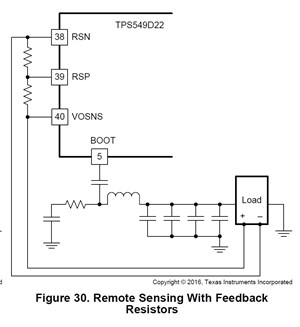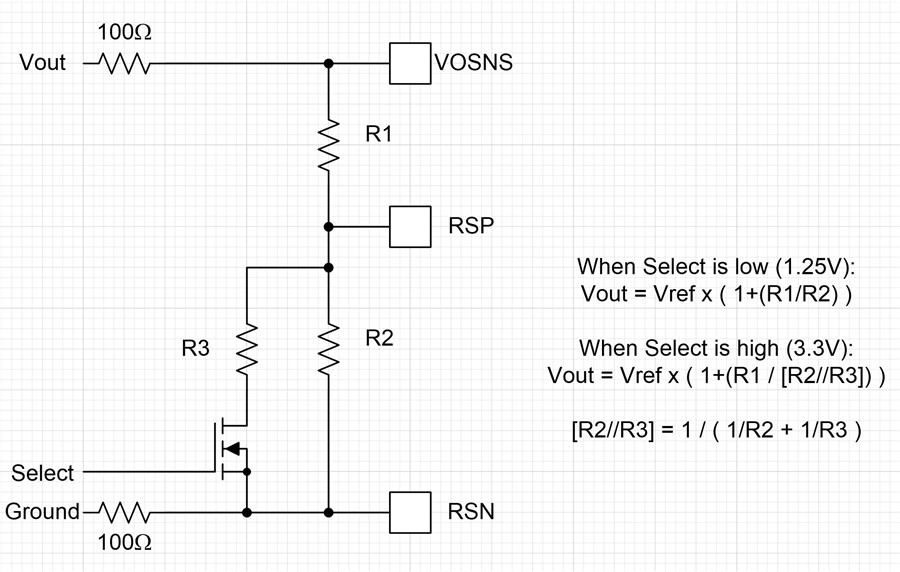Other Parts Discussed in Thread: TPS549D22, TPS546D24A, TPS546A24A
I am using the TPS549B22 1.5-V to 18-V VIN, 4.5-V to 22-V VDD, 25-A SWIFT Synchronous Step-Down Converter With Full Differential Sense and PMBus. I was wondering if it is possible to change between output voltages with the PMBUS. I need a 1.25V output and a 3.3V output. Only one has to be on at a time. In addition, while reading the TPS549B22 datasheet, I was confused on the following sections:
7.5.2.1 RSP/RSN Remote Sensing Functionality (How do I select the correct feedback resistor values?)
7.5.2.2 Power Good (PGOOD Pin) Functionality (What is this pin used for? Is it a vital part of the design? This section does not make sense to me.)
I would really appreciate if someone could clear up these sections for me as well as let me know if the two output configuration is possible with this IC. Thanks!




